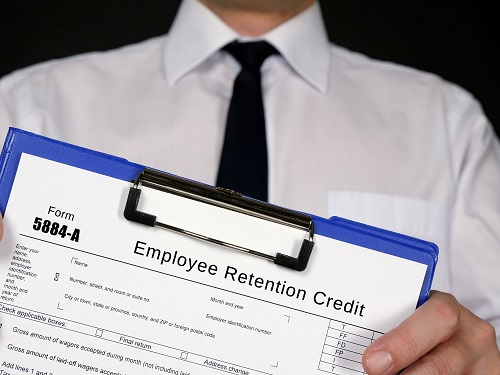

After repeated attempts to unlock the funding (and the celebrations when it finally happened), it’s unlikely anyone in the sports event industry is going to forget about the Paycheck Protection Program (PPP), nor many of the other programs available. But an even more impactful form of crisis funding, the Employee Retention Credit (ERC), has flown under the radar.
The ERC is a refundable payroll tax credit available to businesses and tax-exempt organizations that lost significant business or had to fully or partially suspend operations during the pandemic due to government restrictions.
Created by the CARES Act in March 2020, and later amended by the Relief Act and ARP Act, it encourages businesses to keep employees on their payroll. For 2020, the ERC was a maximum of $5,000 per full-time employee for an employer whose business has been financially impacted by COVID-19. For 2021, the ERC is a maximum of $7,000 per employee per quarter.
According to Running USA, which lists a variety of resources for event owners and directors, and who recently helped to bring the ERC to the attention of race owners, vendors and others, the ERC “is an excellent tool for qualified businesses and tax-exempt organizations to pay off debts, rehire staff, market upcoming events or use for whatever purposes are needed.”
Being unaware of the ERC could mean significant missed opportunities, particularly considering that, in some cases, the dollar amount of ERC funding can exceed an organization's PPP funding amount. Plus, ERCs aren’t a loan - in many cases, they are a direct cash refund.
I have prepared a white paper with detailed information on ERC, including instructions for applying. That document can be accessed free of charge here.
The sports event industry, however, is nothing if not diverse, made up not just of event owners but of plenty of others. These include quasi-governmental organizations (sports commissions, convention & visitors bureaus, chambers of commerce and so on) – who hit snags in accessing PPP funding initially. It also includes groups like Minor League Baseball Clubs, who are currently working to obtain PPP funding. Here is an explanation of how the ERC can apply – and how it can’t.
Overview
For CVBs, DMOs and sports commissions the key Employee Retention Credit eligibility issue is whether the legal entity responsible for paying wages to employees is a tax-exempt organization or is an instrumentality of a government. Generally, the tax-exempt organizations would be eligible, and instrumentalities of a government would not be eligible for the ERC.
As you will see in the “Instrumentalities of a Government” section below, there is quite a bit of nuance and judgement about what constitutes a government instrumentality. It largely revolves around what entity has ultimate control of the CVB, DMO or sports commission.
Once an organization is considered “eligible,” it still has to “qualify” for the ERC. To “qualify” for the ERC, an organization either must have been shut down by governmental order OR suffered a certain decline in “gross receipts,” which usually equates to revenues. If an organization was ordered to fully or partially shut down or if its gross receipts (revenues) fell below 50% for the same quarter in 2019 (for 2020) and below 80% (for 2021) the organization should qualify.
Tax-Exempt Organizations
According to IRS Guidance Notice 2021-20, “For purposes of the employee retention credit, a tax-exempt organization described in section 501(c) of the Code that is exempt from tax under section 501(a) of the Code is deemed to be engaged in a “trade or business” with respect to all operations of the organization.” These organizations are considered eligible.
Keep in mind that Section 501(c) of the U.S. tax code has 29 sections which list specific conditions particular organizations must meet in order to be considered tax exempt under the section.
Instrumentalities of a Government
According to IRS Guidance Notice 2021-20, Section 2301(f) of the CARES Act provides that the employee retention credit does not apply to the Government of the United States, the government of any State or political subdivision thereof, or any agency or instrumentality of those governments. Accordingly, these entities are not eligible employers.
In general, for employment tax purposes, the IRS considers six factors in determining whether an organization is a government instrumentality. The six factors that are used to determine whether an organization is an instrumentality are:
- whether the organization is used for a governmental purpose and performs a governmental function;
- whether performance of the organization’s function is on behalf of one or more States or political subdivisions;
- whether there are any private interests involved, or whether the States or political subdivisions involved have the powers and interests of an owner;
- whether control and supervision of the organization is vested in a public authority or authorities;
- if express or implied statutory or other authority is necessary for the creation and/or use of such an instrumentality, and whether such authority exists; and
- the degree of financial autonomy and the source of its operating expenses.
No one factor is determinative; instrumentality status is based on all the facts and circumstances. These same factors apply to identify an instrumentality of the Federal government, or of a State or local government, for purposes of the employee retention credit.
The same definitions that apply to CVBs, DMOs and sports commissions would apply to Minor League Baseball clubs. It basically comes down to the legal entity that owns them.
The full white paper, including information on the ERC and how to go about applying for it, can be found at this link.

